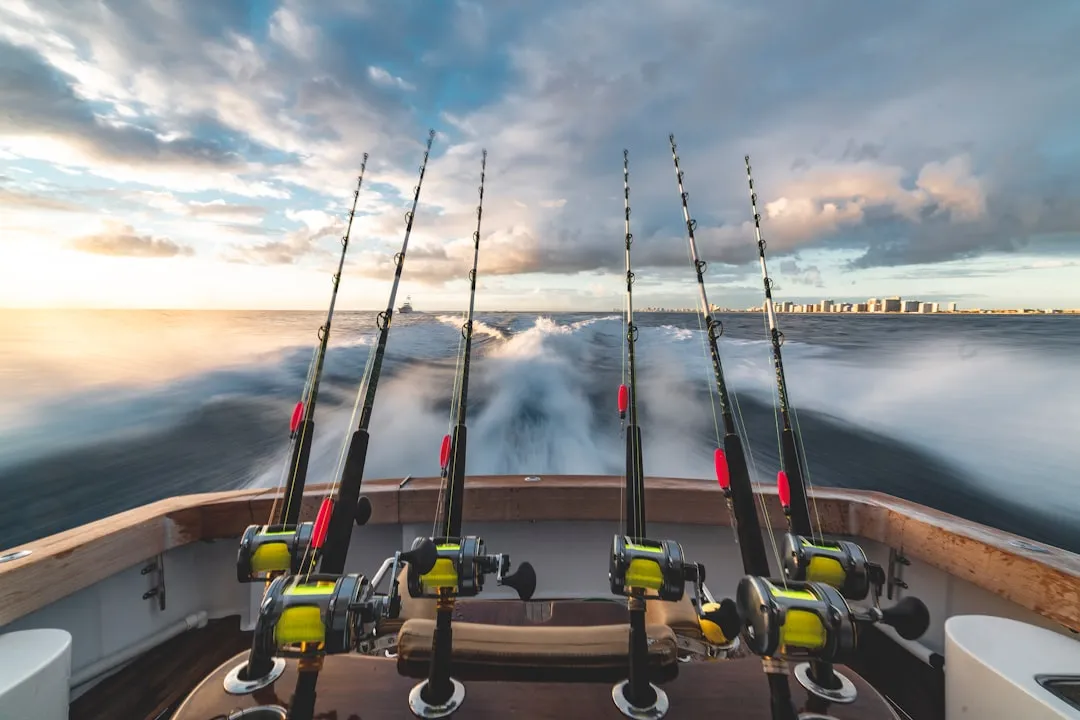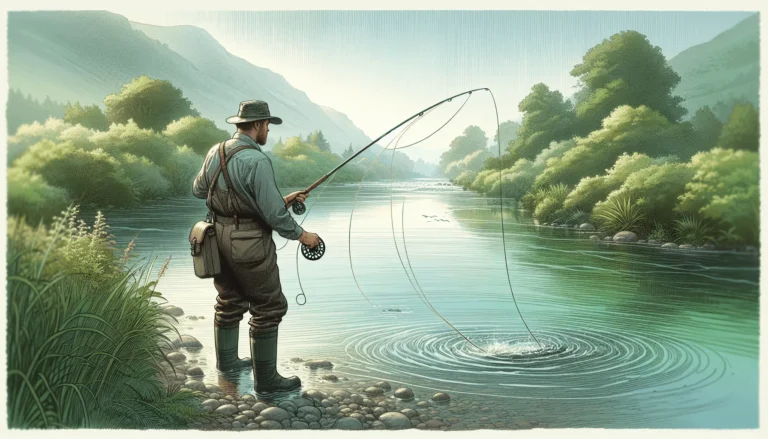When it comes to fishing line, anglers often find themselves weighing the pros and cons of braided line vs mono. These two types of fishing line have distinct characteristics that can significantly impact an angler’s success on the water. Understanding the differences between braided line and monofilament line is crucial for selecting the right option for various fishing techniques and conditions.
Braided line and monofilament each have unique properties that affect their performance in different scenarios. This article delves into the strength and diameter comparison of these lines, examines their casting performance, and explores their visibility and stealth characteristics. By the end, readers will have a clear understanding of when to use braided line or monofilament line to enhance their fishing experience and increase their chances of landing that prized catch.
Strength and Diameter Comparison

Braided Line Strength
Braided fishing lines offer exceptional strength compared to their monofilament counterparts. They are made from tightly woven strands of synthetic fiber, resulting in a line that packs a powerful punch . This construction gives braided lines superior durability, allowing them to withstand rough terrain and aggressive fish. They hold up well against sharp rocks and toothy predators, ensuring the line stays intact during intense fights .
The strength of braided lines also translates to improved performance in various fishing scenarios. For instance, braid is better suited for most vegetation applications, as it cuts through grasses and submerged vegetation with ease . This characteristic makes it an excellent choice for fishing in heavy cover or when using lures with sharp hooks .
Monofilament Line Strength
Monofilament fishing line, typically made of a single strand of nylon, has its own set of strengths . While it may not match the sheer power of braided lines, mono lines have unique traits that make them valuable in certain situations .
One of the key advantages of monofilament is its ability to stretch. This flexibility acts as a shock absorber when battling big fish, reducing the risk of line snapping under pressure . This stretching quality makes mono lines particularly effective when fishing with smaller treble hooks, as it allows the fish to fight without tearing free .
Read Also: Top 15 Best Gifts for Fly Fisherman in 2024
Diameter Differences
The diameter difference between braided and monofilament lines is significant and has a substantial impact on fishing performance. Braided lines have a much thinner diameter compared to monofilament lines of the same pound test . This characteristic allows anglers to fit more line on their reels without sacrificing strength.
For example, if a reel is classified to hold 180 yards of 12-pound monofilament line, an angler could spool the same reel with 180 yards of 40-pound braided line . This increase in break strength without sacrificing line capacity is particularly advantageous when fishing in deep water or when hooked into a big fish that takes a lot of drag .
To illustrate the diameter differences, here’s a comparison table:
| Line Type | Pound Test | Equivalent Mono Diameter |
|---|---|---|
| Braid | 10 lb | 4 lb |
| Braid | 20 lb | 6 lb |
| Braid | 30 lb | 8 lb |
| Braid | 50 lb | 12 lb |
This thin diameter of braided lines also contributes to their improved casting performance, allowing for longer casts and easier use in smaller reels .
Casting Performance
Braided Line Casting
Braided fishing lines offer superior casting performance due to their unique construction. The thin diameter of braided lines allows for longer casts and easier use in smaller reels . This characteristic gives anglers the ability to cover more water, which can lead to increased fish-catching results . In fact, tests have shown that braided lines can provide a significant advantage in casting distance compared to monofilament lines. One experiment demonstrated a 7% increase in casting distance with braid, while another showed a remarkable 30% advantage when using lighter lures .
The improved casting performance of braided lines stems from several factors. Their lack of memory and limp nature allow them to come off the spool straight, resulting in longer casts with fewer tangles . Additionally, the power-to-diameter ratio of braided lines enables anglers to propel lures further, reaching distant hotspots with ease .
Read Also: Is Fly Fishing Hard to Master? Expert Insights Tips
Monofilament Line Casting
While monofilament lines may not match the casting distance of braided lines, they have their own advantages in certain situations. Monofilament is generally more forgiving during casting, making it a suitable choice for beginners . The flexibility and stretch of mono lines contribute to accurate casting and allow for a more natural lure movement .
However, monofilament lines have some drawbacks when it comes to casting performance. Their larger diameter compared to braided lines of the same strength can cause spinning reel spools to fill up quickly . Moreover, mono’s higher memory and stiffness can lead to line twists and tangles, potentially affecting casting distance and accuracy .
Impact on Fishing Techniques
The casting performance of braided and monofilament lines can significantly impact various fishing techniques. For instance, braided lines excel in vegetation applications, cutting through grasses and submerged vegetation with ease . This makes braid an excellent choice for techniques like punching and frogging in thick cover .
Monofilament lines, on the other hand, are better suited for techniques that require the line to float or stay higher in the water column. Their buoyancy makes them a favorite among anglers using topwater lures or shallow-running crankbaits . The stretch of monofilament can also be advantageous when fishing with smaller treble hooks, as it allows the fish to fight without tearing free .
Understanding the casting performance of each line type helps anglers make informed decisions based on their specific fishing needs and techniques. By choosing the right line for the right situation, anglers can maximize their casting distance, accuracy, and overall fishing success.
Visibility and Stealth

Braided Line Visibility
Braided fishing lines are known for their strength and thin diameter, but they have a significant drawback when it comes to visibility. In clear water conditions, braided lines can stand out, potentially alerting fish to the presence of the angler’s gear . This high visibility can be particularly problematic in situations where stealth is crucial, such as when targeting wary species or fishing in ultra-clear waters.
However, braided lines do have some advantages in certain scenarios. They blend in well with thick vegetation, making them less detectable even in clear water . This characteristic makes braided lines an excellent choice for fishing in heavy cover or areas with dense aquatic plants.
Read Also: How to Choose What to Wear Under Waders When Fly Fishing
Monofilament Line Visibility
Monofilament lines offer superior stealth compared to braided lines in many fishing situations. Their near-invisibility underwater keeps the presentation natural and enticing to wary fish, increasing the chances of a successful hookup . This low visibility is particularly advantageous in clear water conditions, where fish are more likely to detect fishing lines .
The color of monofilament lines can be chosen to match the water conditions, further enhancing their stealth. Clear lines work well in most situations, while green or blue lines might be better suited for stained or muddy water . Additionally, the buoyant nature of monofilament lines can be beneficial for certain fishing techniques, such as topwater fishing .
Effects on Fish Behavior
The visibility of fishing lines can significantly impact fish behavior and, consequently, an angler’s success. When fish can see the line, they may become spooked and avoid biting . This is particularly true for species with excellent vision, such as trout, which can detect even the smallest details in their environment .
To minimize the impact of line visibility on fish behavior, anglers can employ several strategies:
- Use lighter line: Thinner lines are harder for fish to see, but ensure it’s still strong enough for the target species .
- Pay attention to knots: Bulky or poorly tied knots can be a giveaway, so practice tying neat, compact knots .
- Consider using fluorocarbon leaders: Fluorocarbon is nearly invisible underwater due to its refractive index being similar to water .
By carefully considering line visibility and employing these tactics, anglers can increase their chances of success, especially when targeting cautious fish in clear water conditions.
Conclusion
The choice between braided line and monofilament has a significant impact on an angler’s success. Each type of line has its own strengths and weaknesses, making them suitable for different fishing scenarios. Braided lines excel in strength and casting distance, making them ideal for fishing in heavy cover or when targeting big fish. On the other hand, monofilament lines offer better stealth and stretch, which can be crucial when fishing in clear water or using certain techniques.
In the end, the decision to use braided or mono line depends on the specific fishing situation and personal preference. Understanding the unique properties of each line type allows anglers to make informed choices to improve their fishing experience. By carefully considering factors such as strength, casting performance, and visibility, fishermen can select the most appropriate line to increase their chances of landing that prized catch.
Read Also: Which is Better? British vs American Fly Fishing
FAQs
1. Which is preferable for fishing, monofilament or braided line?
Monofilament line is generally safer as it holds knots better and is less likely to cause injury if a big fish struggles near the boat. It is also more cost-effective and functions better on smaller bait-casting reels, as lightweight braided line can bury itself into the spool under tension.
2. Are there situations where braided fishing line should be avoided?
Braided line is not ideal for fishing in clear water due to its higher visibility compared to monofilament line. This increased visibility can deter fish from biting.
3. What are the disadvantages of using braided line?
While braided line offers several advantages, it also has some drawbacks including higher cost and the need for more skill to handle effectively. Additionally, its visibility can be a disadvantage in clear water settings.
4. What is a major advantage of using braided line over monofilament?
A significant advantage of braided line is its thin diameter compared to monofilament of the same strength. This allows anglers to spool more line onto their reels, facilitating longer casts and better handling of large fish.




